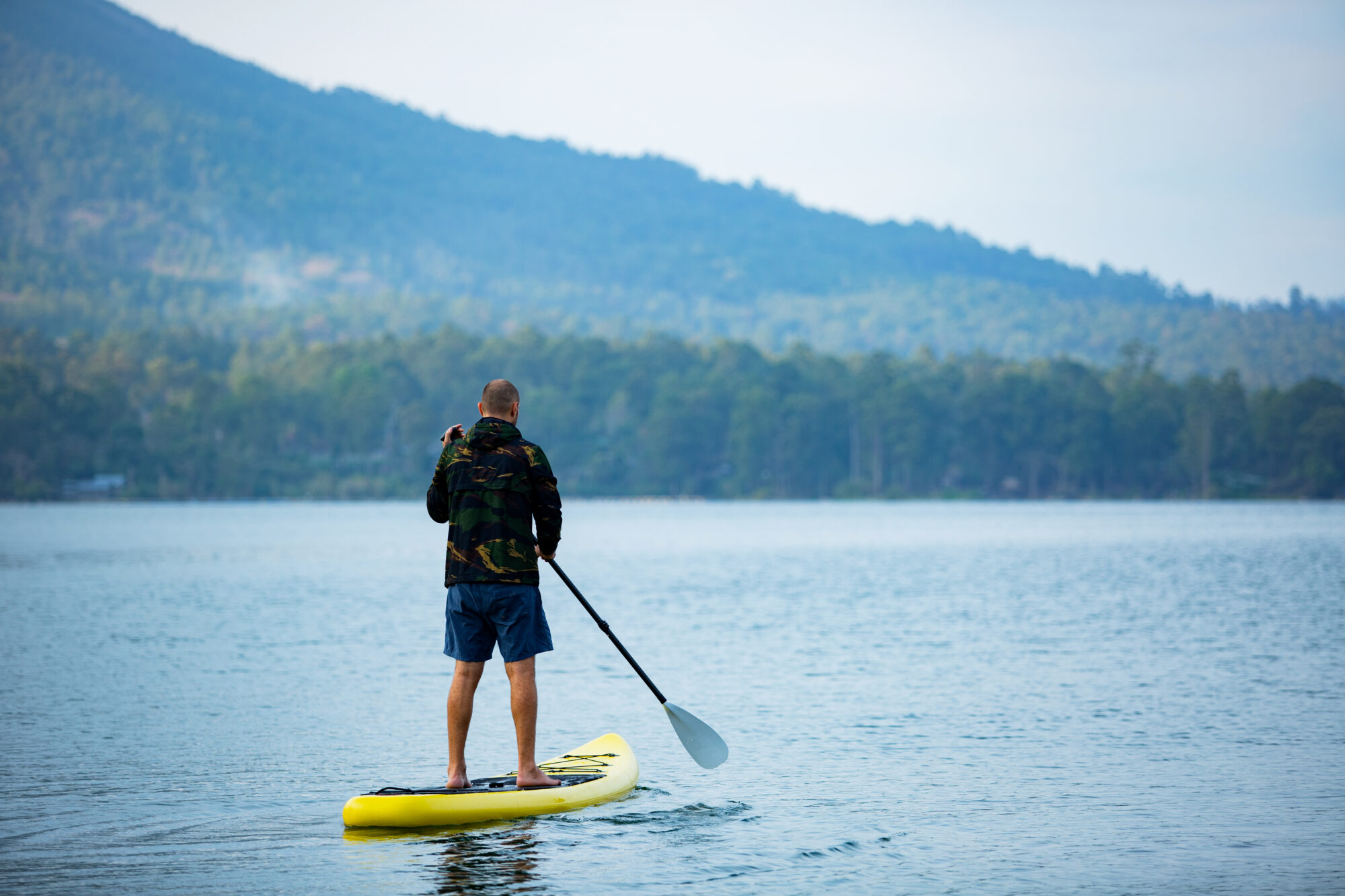The off-season has traditionally been a time of rest and reset for athletes, while fans shift their focus to transfer gossip and countdowns. But increasingly, both players and supporters are rethinking what recovery means. It’s no longer just about taking a break from training or the stadium. It’s about replenishing the mind and body in ways that are restorative, sustainable, and surprisingly fun. Enter paddle boarding—a sport that’s surging in popularity and redefining what active recovery can look like. And with the rise of the inflatable paddle board, it’s never been easier to embrace this low-impact, high-reward experience.
Recovery Through Rhythm: Why Paddle Boarding Works
At its core, paddle boarding is a full-body, low-impact activity that engages core strength, improves balance, and promotes cardiovascular health—all without the strain that comes with running or lifting. It’s why elite football clubs have started incorporating it into off-season or rehab programs. It’s not just a break from the pitch; it’s therapy on water.
Standing on a board while paddling across still water demands mindfulness. The rhythm of the stroke, the need for posture control, and the gentle motion of water all create an environment that calms the nervous system and encourages physical alignment. For football players recovering from micro-tears, joint strain, or intense tactical seasons, it’s a way to rebuild without overstressing the body.
Unlike other recovery activities, paddle boarding offers adaptability. You can coast gently on a calm lake or push your stamina in open water. Either way, it allows the body to move, stretch, and strengthen—all essential components of athletic longevity.
From Fans to Fitness: A New Kind of Matchday Ritual
Fans, especially the die-hard types, often spend hours in high-energy environments—chanting, standing, walking long stadium steps, or enduring long travel times. But in the off-season, the focus shifts. What was once a passive gap between fixtures becomes a chance to improve one’s own health, mental clarity, and fitness.
Weekend warriors and amateur footballers are now looking to mirror their heroes in how they unwind. That includes moving away from the pub and toward the pier. Paddle boarding, with its blend of leisure and exertion, provides a mindful outlet. It gives fans a way to remain active, social, and connected to movement—without needing a full pitch or a team to participate.
What’s more, paddle boarding is accessible to all fitness levels. Whether you’re 25 or 55, the inflatable paddle board allows you to get on the water with minimal skill, making it ideal for both seasoned athletes and everyday enthusiasts.
Why Inflatable Paddle Boards Are Changing the Game
One of the major reasons paddle boarding has exploded in popularity is the convenience offered by inflatable versions. Traditional hard boards were often bulky, required roof racks, and needed specific storage conditions. In contrast, modern inflatable paddle board roll up into backpacks, inflate in minutes, and perform nearly identically to their rigid counterparts.
For football fans who travel to matches or explore new cities during the off-season, this means paddle boarding becomes part of their mobile lifestyle. You could be in Madrid one weekend and Cornwall the next—your board rolls with you.
This portability has also made paddle boarding a social sport. Fans are organizing group paddles, sharing content online, and integrating outdoor fitness into supporter culture. The same way that running clubs emerged from football communities, paddle groups are now forming among supporters who crave something deeper than just watching games.
Mental Recovery and Mindfulness on Water
Mental recovery is an increasingly important part of athletic and fan performance. Footballers deal with intense pressure, both from the media and internal expectations. Fans, too, often face emotional highs and lows throughout the season—sometimes even tying their mood to the team’s win-loss record.
Being on water naturally creates a state of calm. Research shows that proximity to water reduces cortisol levels, enhances mood, and improves sleep. When paired with gentle physical activity, the benefits are amplified. Footballers use paddle boarding as a way to unwind without entirely disconnecting from movement. Fans use it to reset from the intensity of the season and reconnect with nature.
The silent stroke, the open space, and the absence of screens offer rare quiet moments. It’s where strategy, clarity, and emotional resilience are born. For athletes preparing for another grueling season, that’s gold. For fans recalibrating before the next kickoff, it’s essential.
Building Community Beyond the Stadium
Peter J. Product Owner of Fanpass says, “Supporters are discovering that their connection to their club doesn’t need to stop at the stadium gates. Paddle boarding meetups—sometimes even organized by official supporter clubs—are becoming ways to extend that sense of community. It’s not uncommon now to find post-match paddle sessions or recovery paddles organized after intense fan travel weekends.”
Moreover, the shared ethos of paddle boarding—discipline, flow, endurance—mirrors football values. It’s not about racing. It’s about balance, progress, and presence. These themes resonate deeply with both players looking to stay grounded and fans seeking meaning in their active lives.
Some clubs have even begun to partner with local paddle boarding companies to offer experiences that combine stadium tours and water-based adventures, especially for tourists. The synergy between movement, location, and fandom is becoming an experiential economy of its own.
The Future of Recovery in Football Culture
As wellness takes a front seat in both elite sport and everyday life, we’ll likely see more crossover between traditional athletics and mindful movement. Just as yoga became a locker room staple and cycling took over urban recreation, paddle boarding is poised to be the next big thing in off-season recovery culture.
It doesn’t require a coach. It doesn’t demand a schedule. It’s easy to learn, and its rewards—physical, emotional, communal—are immediate.
Whether you’re a footballer seeking alignment and core strength, or a supporter wanting a healthier way to celebrate the break between seasons, paddle boarding offers something real. And with a quality inflatable paddle board, the barriers to entry are virtually gone.
The pitch may be silent in the off-season, but recovery doesn’t mean stillness. For a growing number of players and fans, it means paddling forward—literally—toward balance, health, and connection.



































